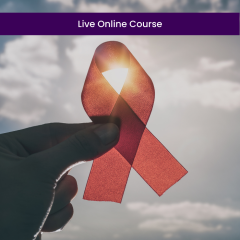Pain and Opioid Misuse in Children and Adolescents (1 CE)
Number of Credits: 1
This course is for: Clinical Psychologists, Counselors, LMFTs, and Nurses
Course By: Tim Grigsby, PhD
Content By: Dash, G. F., Wilson, A. C., Morasco, B. J., & Feldstein Ewing, S. W. (2018). A model of the intersection of pain and opioid misuse in children and adolescents. Clinical Psychological Science, 6(5), 629-646.
Course Description: Rates of opioid misuse among young people have been increasing in line with the opioid epidemic observed in adult populations. However, the role of pain in opioid misuse patterns among young people remains understudied. Understanding the multilevel influences on opioid misuse among children and adolescents identifies pain as a central component of opioid use and problems. The researchers propose that psychologists can play an important role in informing policies and developing preventative interventions with partners in healthcare settings.
Learning Objectives:
- Discuss the efficacy of opioid treatment for acute and chronic pain management in youth
- List one peer and one parental risk factor for opioid misuse in youth experiencing pain
- Identify one prevention target for future intervention work in healthcare settings
Course Outline:
- Read and understand A model of the intersection of pain and opioid misuse in children and adolescents
- Review the Course Description and Learning Objectives
- Reflect on the individual-, peer-, family-, and social-based risk factors of youth opioid misuse
- Work through the post-test questions; keep in mind that answer selections should be derived from the respective article
- Return to the referenced article for any missed questions and/or to better understand the risk factors for opioid misuse among youth and possible intervention targets
Implicit biases incorporate an association that occurs outside of conscious awareness that may resultantly lead to a negative patient evaluation derived from irrelevant characteristics; i.e. gender and/or race. A systematic review of the literature was conducted. Thirty-five studies identified the existence of implicit bias in healthcare professionals; all correlational studies evidenced a significant positive relationship between implicit bias levels and lower quality of care (FitzGerald & Hurst, 2017). Continued research in health care settings, combined with greater method homogeneity, should be employed to examine the occurrence and prevalence of implicit biases in healthcare settings as a strategic approach for mitigating related disparities (FitzGerald & Hurst, 2017).
Reference:
FitzGerald, C., & Hurst, S. (2017). Implicit bias in healthcare professionals: A systematic review. BMC Med Ethics 18, 19. https://doi.org/10.1186/s12910-017-0179-8
Approvals:
| Board Approvals | American Psychological Association (APA), NBCC, Florida Board - Social Work, MFT, Counseling, and Psychology, NYSED - Social Work, MFT and Counseling Only, American Academy of Health Care Providers in the Addictive Disorders |
|---|---|
| CE Format | Online, Text-Based |







